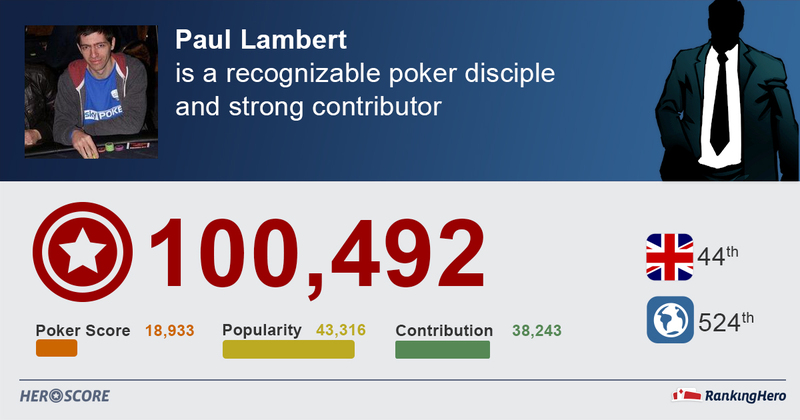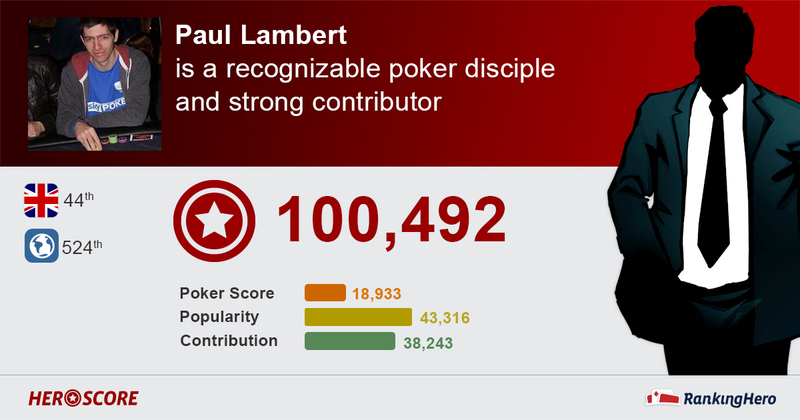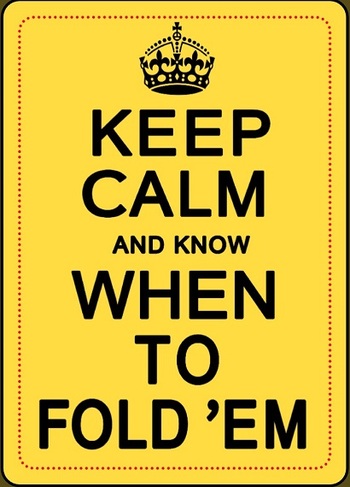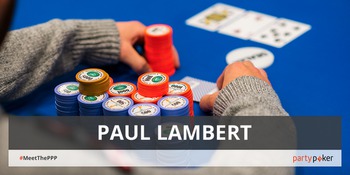Hello @Paul Lambert :) Hope you are doing well.
We've prepared 4 personalized images for you to show you the new look oh the #HeroScore widget. Now I would like to ask your vote for your favorite one:
1.)

2.)

3.)

4.)

I just wanted to say wp to everyone that took part in the Battle of Malta HH, and wp to RKH for running such a great promo.
GL to everyone involved. Like getting it in AK v QQ... it's all down to the poker gods now ;)
P.S. last chance to 'like' my river play :P
http://www.rankinghero.com/en/players/380799/paul-lambert/activity/2363905.html
 Paul Lambert - Blog Post - Ranking Herowww.rankinghero.com
Paul Lambert - Blog Post - Ranking Herowww.rankinghero.com
Elena RKH 2 Jun 2015

Here is the hand:
Imagine you’re in Malta playing the 2015 PokerListings Battle of Malta. Lucky you!
You are close to the bubble.
The blinds are 1,000/2,000/200.
Preflop
Everyone folds to the player in middle position. He’s an aggressive Swedish pro, with 136,250 chips, and he raises to 5,000. Two hands earlier, the villain lost 20% of his stack on a bluff on the river.
You’re on the button with K♥K♦ and a stack of 130,500.
You decide to 3-bet 12,000 chips.
The small blind and the big blind both fold.
Villain calls.
The pot is now 28,800 chips.
Flop
The dealer reveals Q♠K♠7♠.
Villain bets 12,000.
The action is back on you. You now have a 118,500 stack.
You raise his bet to 28,000 chips.
Villain decides to call.
Turn
The turn card is 3♠
Villain checks.
The pot is 84,800. You have a 90,500 stack
On villain’s check on the turn, you bet 24,000 chips.
And, once again, he calls.
River
The river is the 2♥.
The pot is now 132,800.
Villain decides to push all his stack in.
He covers you by 6,000 chips.
What do you do?
Right, I'm sure everyone else is scared to be the first one to post on this because on the face of it, it seems like quite a tough spot, so I'll throw my hat in the ring...
Essentially this all comes down to whether the villian is turning some weaker made hands into bluffs due to our small bet potentially being seen as weakness. However, our small bet on the turn could also be seen as very strong and not wanting to 'lose our customer'. In my opinion, he no longer has any airballs on the river, he wouldn't call even a tiny bet on the turn with say JT (no spade) on a 4 spade board.
His range now consists mostly of value hands/flushes which beat us where he wants us to make a hero call knowing that if he checks we will definitely be checking back. I've pretty much ruled out most worse value hands but it's always a good idea to allow for a couple of combos of these hands (KQ/K7/Q7/77) because no one plays the same hand in the same way 100% of the time. So there is still a small chance he has a few of the above hands which he could jam the river with as a bluff, sensing weakness....
However, he has to be trying to make us fold such an insanely narrow range, basically, KK/QQ because he beats most non flush hands. We also still need to remember that using combinatorics and the fact we have KK makes it very very unlikely he has one of these value hands to turn into a bluff. Whereas there are ALOT of combos of Ax with the ace of spades (all of which probably play it exactly like this on every street), not to mention the potential he's going for thin value with the 2nd nuts with something like Jx with the J of spades
From a purely chip EV point of view, we would be calling around 60,000 to win 190,000 so we are getting roughly 3-1 meaning we need him to be bluffing around 25% of the time to make it a call. In reality though we need to be correct a little more often than that because this is the stone bubble and we are calling all-in. It's all very good to say 'we need to play for the win' and that is very true, that is the way to play tournaments, but at the same time that doesn't mean ICM and making it into the money should be totally disregarded, it's still a consideration that needs to be taken into account. On top of that consideration, I think his range doesn't involve enough bluffs to make it a +EV chip call alone, nevermind a +£EV call.
It's easy to say 'we had a plan, we had a monster pre and on the flop, he's aggressive and we wanted to give him the chance to hang himself so now we have to go with it' but that's not always the case. A poker hand changes on every single street and our plans need to adapt to that, sometimes we have a gameplan for a hand then a horrible runout puts a spanner in the works and we need to know when it's time to change plan.
All these extra bits of info... he's swedish, aggressive, just lost 20% of his stack etc, these are all nice, useful pieces of information to help us make the best decision we can, but they can't just over-ride our other bigger tools like the ability to hand read.
In short, we had what was shaping up to be a great spot for us, things turned a little sour in the middle and now we've been left in a spot where the only option is to fold and focus on spinning up our 30xBB
#HandMalta & ##BOMriver.
Paul Lambert 30 May 2015
That's just one of the beautiful things about poker innit, everyone can have different views/opinions, doesn't mean either of us are right or wrong. We just assigned the villian different ranges and so that changes everything.
Del 30 May 2015
haha cool man, i just saw your quote marks ie; " hanging himself" and assumed you were going all "TwoPlusTwo" on me lolol.
Yeah 100% agree with the fold for sure, i'm just one of these difficult people who try and disect things into tiny little pieces for fun...
Just my inner geek i guess. If you were genuinely not quoting my ramble, i apologize for my rant, it is indeed a bit of fun.
"That's just one of the beautiful things about poker innit, everyone can have different views/opinions, doesn't mean either of us are right or wrong. We just assigned the villian different ranges and so that changes everything."
+1 to this....
From my perspective you are an expert, if i can get even slightly close to where you are now, i'd be very happy, by which time you'll have long moved on and started crushing "The Big Game" hopefully ; )
(*I'd get coaching from you if you offered it)
take it easy dude gl gg
Nicolas Levi 2 Jun 2015
<3
So I made a commitment at the start of this year that I was finally gonna leave the house once in a while and get out to play some more live poker. I love playing live, for me it's a break from the online grind and is a lot more fun being able to actually socialise with other human beings at my table...
Long story short, it's nearly June and I've totally failed so far, think I've played 2 live comps all year!
Someone just reminded me about it so I thought I'd get back on it and have a quick browse of the dates for upcoming tours in the UK.
For anyone that doesn't know I live in Oxfordshire now but originally I'm from Liverpool and lived there up until about 6 years ago. So I'm looking at playing the £220 GPS in Liverpool (I get free 'hotels' cos I can stay with my mum) and the £550 GPS in Reading (nice and close to where I live), both coming up in June I believe.
Are there any other RKHers that will be at these events and fancy meeting up for a drink?
Here is the hand:
Imagine you’re in Malta playing the 2015 PokerListings Battle of Malta. Lucky you!
You are close to the bubble.
The blinds are 1,000/2,000/200.
Preflop
Everyone folds to the player in middle position. He’s an aggressive Swedish pro, with 136,250 chips, and he raises to 5,000. Two hands earlier, the villain lost 20% of his stack on a bluff on the river.
You’re on the button with K♥K♦ and a stack of 130,500.
You decide to 3-bet 12,000 chips.
The small blind and the big blind both fold.
Villain calls.
The pot is now 28,800 chips.
Flop
The dealer reveals Q♠K♠7♠.
Villain bets 12,000.
The action is back on you. You now have a 118,500 stack.
You raise his bet to 28,000 chips.
Villain decides to call.
Turn
The turn card is 3♠
Villain checks.
The pot is 84,800. You have a 90,500 stack.
What do you do?
This is certainly not the best turn card in the deck but it's not a total nightmare situation yet...
This is one of those spots that shows how great it is to have position in a hand because now we can keep the pot under control.
Again, like on all streets, we now have to re-assess the villian's range, how the turn card has connected with that range and so figure out what the best course of action is.
There is absolutely no good reason to bet here at all. We removed most made value hands from his range after his donklead on the flop, but now we've raised and he's just flatted on such a wet flop then I think we definitely now have to discount all those hands like KQ/Q7/K7/77 because they are strong yet vulnerable on the flop and on such a wet flop are hands which he would almost definitely shove knowing he can get action from worse or (happily) fold out high equity hands.
The fact he just flatted our flop raise cements the idea further that his flop range was pretty much exclusively draws.
Betting the turn would be a disaster, we would be turning our hand into a bluff (a very bad one) because we are never going to get called by worse now and there are literally zero hands better than ours that we can make fold. I don't give him credit for having many bare gutshots on the flop, I think he'd only lead with gutshots that had 1 spade so they are now be ahead and aren't folding. Any 1 spade hand that called flop is of course ahead and isn't folding, so pretty much the only hand we fold out is JT (without a spade) and that has very small equity against us anyway.
Very easy check-back on the turn. This is also balanced by the fact we aren't always gonna continue firing with hands like Ax (with ace of spades) because as above, it's very hard for him to have a worse hand to call with so a check-back here doesn't need to mean we're turning our hand face up.
Adrien Bacchi 29 May 2015

Rémi Rkh 30 May 2015
Paul Lambert 30 May 2015
Cheers @Rémi Rkh and @Adrien Bacchi
Even more confused now. I just looked on my profile and it does seem to have accepted the fact I've added all my online aliases (screenshot below) but it doesn't seem to have any of my online results... are they supposed to be greyed out?
I also have an online score but I dunno why cos it doesn't seem to have my results...
Nicolas Levi 29 May 2015
Hey, we don't display online results, some sites do this very well. We only use your stats to compute points for the HeroScore.
We've noted some refresh bugs so bare with us as we improve the feature. @Laurent Gomez is the man :)
Paul Lambert 29 May 2015
Ah ok, that makes sense then. I've taken the last week off anyway so I'm sure it'll be up to date. Cheers for letting me know
Laurent Gomez 1 Jun 2015
All your logins have now been processed, it was only taking some time.
All is grey because the design wanted it that way ;)
Hey guys,
I mentioned I might start writing some strategy articles and the early feedback flagged up a big leak I think a ton of players have which is bet sizing, so that's as good a place as any to get started...
Nicolas Levi 2 Jun 2015
Great article, thanks for this!
Paul Lambert 2 Jun 2015
Cheers @Nicolas Levi
I'm gonna be doing some more of these kinda basic strategy guides aruond the fundamentals of the game soon, just need some ideas about what people wnat to see.
Del 2 Jun 2015
Hi Paul
Would love to see some "showdown theory" explained at some point....i struggle with the maths on this subject quite a lot...
IE; When is it better to turn my hand into a bluff rather than take a showdown?
Am working on this at the moment, would love to see how others approach this...
Cheers bud : )






